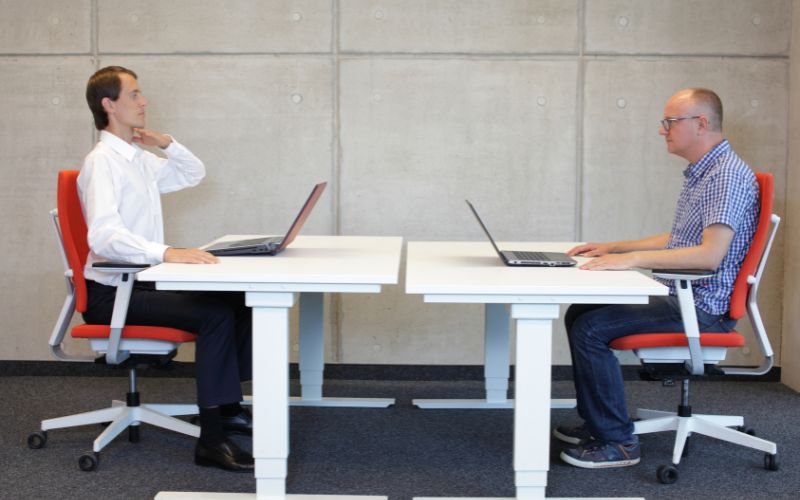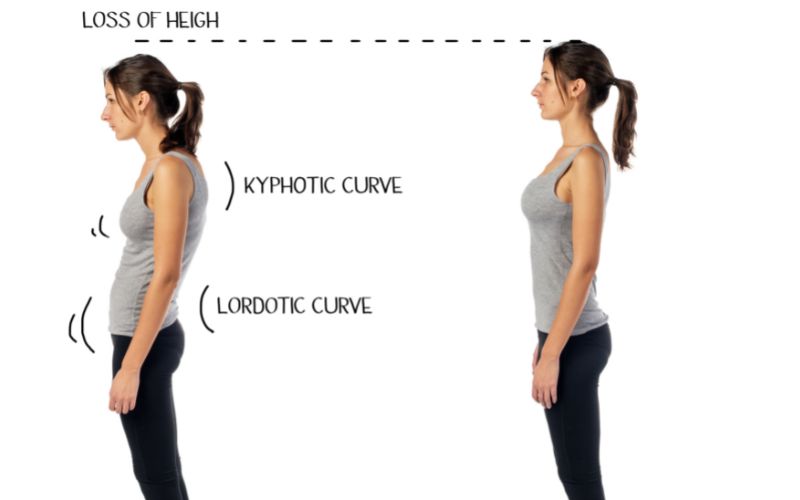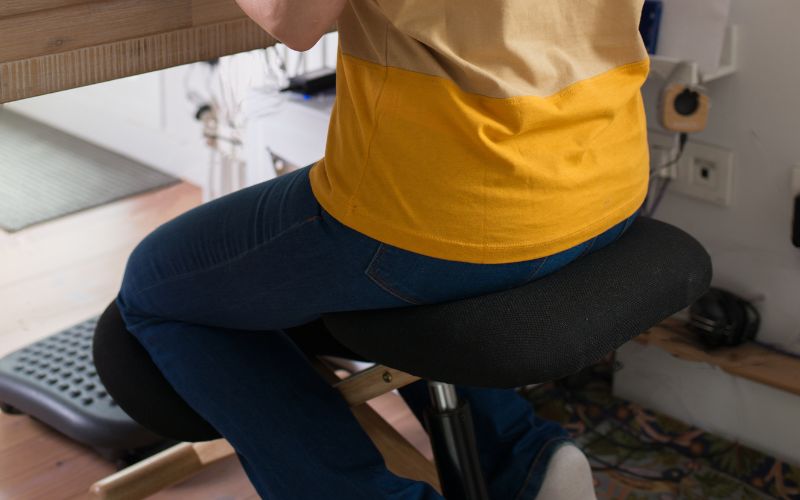Sitting is an integral part of our daily routine, whether it is at work, while driving, or at home. However, sitting for prolonged periods in the wrong posture can cause discomfort, pain, and even long-term health issues. Therefore, it is essential to be aware of the different sitting positions that can help us maintain good posture and prevent any potential health problems.
What is good posture?
Before we dive into the different sitting positions, let’s first understand what good posture is. Good posture refers to the correct alignment of the spine, which helps to distribute the body’s weight evenly. When you have good posture, your muscles, bones, and joints work efficiently, reducing the risk of injury or strain. Good posture also helps to prevent muscle imbalances, which can lead to chronic pain and discomfort.
The importance of maintaining good posture
Maintaining a good posture while sitting is crucial because it helps to prevent several health issues. Poor posture can cause back pain, neck pain, headaches, and even digestive problems. Over time, it can also lead to chronic pain, muscle imbalances, and even spinal deformities. Therefore, it is crucial to maintain good posture while sitting to prevent any potential health problems.
Different sitting positions for good posture
The upright sitting position: This is the most commonly recommended sitting position. Sit up straight with your feet flat on the ground and your back straight. Ensure that your shoulders are relaxed, and your elbows are at a 90-degree angle.
The forward-leaning position
This position is recommended for individuals who suffer from lower back pain. Sit at the edge of your seat, lean forward with your chest and abdomen, and rest your forearms on your thighs.
The reclined sitting position
This position is recommended for individuals who suffer from upper back pain. Lean back slightly, ensuring that your back is still supported by the chair. Keep your feet flat on the ground, and your elbows at a 90-degree angle.
The crossed-leg position
This position is not recommended for prolonged periods, but it can be a comfortable position for short periods. Sit up straight, cross your legs at the ankles, and ensure that your knees are at or below the level of your hips.
The kneeling chair position
This position is recommended for individuals who suffer from lower back pain. Sit on a kneeling chair, ensuring that your knees and shins are supported. Keep your back straight and your shoulders relaxed.
Tips for maintaining good posture while sitting
- Use an ergonomic chair that supports your back.
- Keep your feet flat on the ground, and your knees at or below the level of your hips.
- Avoid crossing your legs for prolonged periods.
- Take breaks and stretch every 30 minutes.
- Adjust your workstation to ensure that your computer screen is at eye level.
Bad Sitting Posture: Causes, Effects, and Prevention
In today’s world, most people spend their time sitting in front of a computer or a desk, whether it’s for work or leisure. However, sitting for extended periods with bad posture can have severe consequences for our physical and mental health. In this article, we’ll explore the causes, effects, and prevention of bad sitting posture.
What is Bad Sitting Posture?
Bad sitting posture refers to the way we sit in a chair, couch, or any other sitting surface that puts stress on our muscles and joints. It’s a result of poor habits that develop over time, such as slouching, crossing legs, or hunching over a computer screen.
Causes of Bad Sitting Posture
Several factors can contribute to bad sitting posture, including:
Poor ergonomics
improper chair height, desk height, or keyboard placement.
Lack of physical activity
lack of exercise can lead to weak muscles that cannot support proper posture.
Injuries
past injuries or surgeries can affect our posture and cause discomfort while sitting.
Genetics
some people may be predisposed to poor posture due to their body structure.
Technology
excessive use of electronic devices can contribute to bad posture. One of the common phenomena is called “Tech Neck“.
Effects of Bad Sitting Posture
Sitting with bad posture can have both physical and mental consequences. Here are some of the effects:
Back and neck pain
Sitting with bad posture can put excessive stress on our spine and lead to discomfort and pain.
Headaches
Tension in the neck and shoulder muscles can cause headaches.
Digestive issues
Slouching can compress our digestive organs and cause bloating and constipation.
Poor circulation
Sitting with crossed legs can restrict blood flow to the legs and feet, leading to swelling and discomfort.
Mood changes
Bad posture can affect our mental wellbeing and lead to feelings of depression and anxiety.
Prevention of Bad Sitting Posture
Preventing bad sitting posture requires a conscious effort to improve our habits. Here are some tips to help:
Practice proper ergonomics
Adjust your chair height, desk height, and monitor position to support proper posture.
Take breaks
Take frequent breaks to stretch and move your body.
Exercise regularly
Strengthening your core muscles can help support proper posture.
Use a supportive chair
Invest in a chair that supports your back and promotes good posture.
Avoid crossing your legs
Keep both feet flat on the ground to support proper circulation.
The Importance of Ergonomics in Sitting
Ergonomics refers to the science of designing equipment, tools, and workspaces to maximize efficiency and minimize the risk of injury. In sitting, ergonomics is critical to maintaining good posture and avoiding strain on our muscles and joints. Proper ergonomics include:
- Adjusting the chair height to support proper posture
- Ensuring the desk height is at the correct level
- Placing the monitor at the correct distance and height
- Using a supportive chair that promotes
Exercises to Correct Bad Posture
In addition to practicing proper ergonomics, exercising can also help correct bad posture. Here are some exercises that can help:
Chin tucks
Sit with your back straight, then slowly tuck your chin towards your chest. Hold for a few seconds, then release. Repeat 10-15 times.
Shoulder blade squeezes
Sit with your back straight and your arms at your sides. Squeeze your shoulder blades together, hold for a few seconds, then release. Repeat 10-15 times.
Wall angels
Stand with your back against a wall and your arms at your sides. Slowly raise your arms above your head, then lower them back down. Repeat 10-15 times.
Cat-cow stretch
Start on your hands and knees, with your wrists directly under your shoulders and your knees directly under your hips. Arch your back towards the ceiling, then lower it towards the ground. Repeat 10-15 times.
Stretches to Relieve Muscle Tension
Sitting with bad posture can cause muscle tension and discomfort. Here are some stretches that can help relieve tension:
Neck stretches
Slowly tilt your head to the left, hold for a few seconds, then tilt it to the right. Repeat 10-15 times.
Upper back stretches
Sit with your back straight, then clasp your hands in front of you and push them away from your body. Hold for a few seconds, then release. Repeat 10-15 times.
Hamstring stretches
Sit on the edge of your chair with your back straight and your feet flat on the ground. Extend one leg out in front of you, then lean forward until you feel a stretch in the back of your thigh. Hold for a few seconds, then switch legs. Repeat 10-15 times.
Proper Sitting Posture Techniques
Practicing proper sitting posture is essential to avoid strain on our muscles and joints. Here are some techniques to help:
- Sit with your back straight and your shoulders relaxed.
- Keep your feet flat on the ground and avoid crossing your legs.
- Adjust your chair height to support proper posture.
- Keep your computer monitor at eye level and a comfortable distance away.
- Take frequent breaks to stretch and move your body.
The Benefits of Good Sitting Posture
Practicing good sitting posture can have numerous benefits for our physical and mental health. Here are some of the benefits:
- Reduced pain and discomfort in the back, neck, and shoulders.
- Improved circulation and reduced swelling in the legs and feet.
- Increased energy and focus.
- Reduced stress and improved mood.
FAQ
Yes, sitting with bad posture for extended periods can lead to permanent damage to the spine, muscles, and joints.
It’s recommended to take a break and move around every 30-60 minutes of sitting at a desk.
Yes, stretching can help relieve muscle tension and correct bad posture when done regularly.
A chair with good lumbar support and adjustable height is ideal for maintaining proper posture.
Yes, bad posture can affect our mood and mental wellbeing, leading to feelings of depression and anxiety. Practicing good posture can improve our mood and reduce stress.










